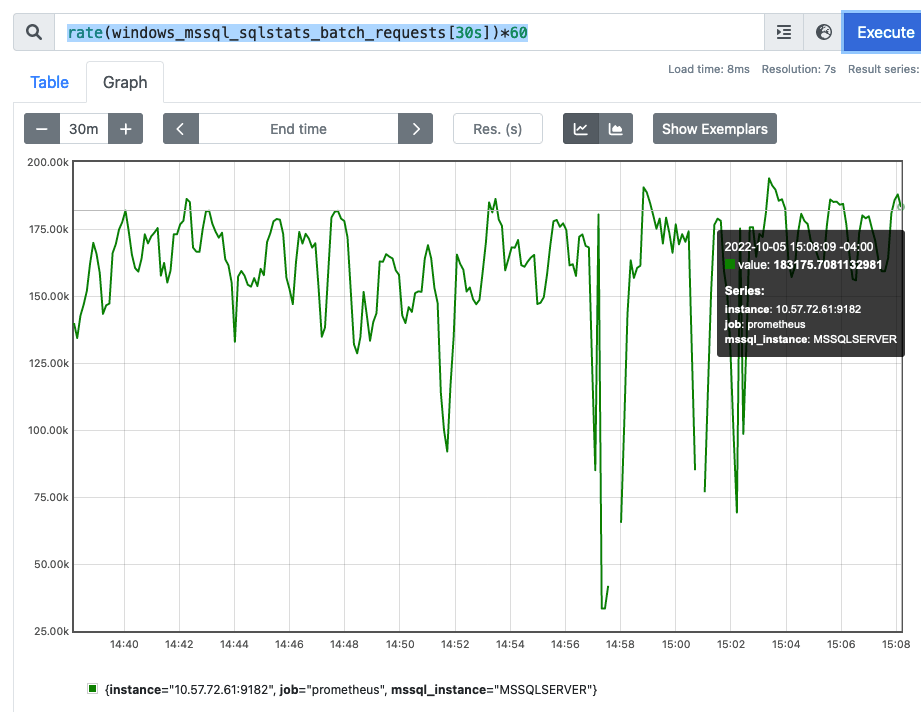The vertica vioperf tool is used to determine whether the storage you are planning on using is fast enough to feed the vertica database. When I initially ran the tool, the IO performance reported by the tool and confirmed by iostat was much lower than I expected for the storage device (a 6Gbit SATA device capable of around 500MB/s read and write).
The vioperf tool runs on a linux host or VM and can be pointed at any filesystem just like fio or vdbench
Simple execution of vioperf writing to the location /vertica
vioperf --thread-count=8 --duration=120s /vertica
Working Set Size
Unlike traditional IO generators vioperf does not allow you to specify the working-set size. The amount of data written is simply 1MB* Achieved IO rate * runtime. So, fast storage with long run-times will need a lot of capacity otherwise the tool simply fills the partition and crashes!
Measurement and goodness
The primary metric is MB/s Per-Core. The idea is that you give 1 Thread per core in the system, though there is nothing stopping you from using whatever –thread-count value you like.
Although the measure is throughput, the primary metric of (Throughput/Core) does not improve just by giving lots of concurrency. Concurrency is generated purely by the number of threads and since the measure of goodness is Throughput/Core (or per thread) it’s not possible to simply create throughput from concurrency alone.
Throughput compared to FIo
Compared to fio the reported throughput is lower for the same device and same degree of concurrency. Vertica continually writes, and extends the files so there is some filesystem work going on whereas fio is typically overwriting an existing file. If you observe iostat during the vioperf run you will see that the IO size to disk is different than what an fio run will generate. Again this is due to the fact that vioperf is continually extending the file(s) being written and so it needs to update filesystem metadata quite frequently. These small metadata updates skew the average IO size lower.
fio with 1MB IO and 1 thread
Notice the avgrq size is 1024 blocks (512KB) which is the maximum transfer size that this drive supports.
fio --filename=/samsung/vertica/file --size=5g --bs=1m --ioengine=libaio --iodepth=1 --rw=write --direct=1 --name=samsung --create_on_open=0
avg-cpu: %user %nice %system %iowait %steal %idle
4.16 0.00 3.40 0.00 0.00 92.43
Device: rrqm/s wrqm/s r/s w/s rkB/s wkB/s avgrq-sz avgqu-sz await r_await w_await svctm %util
sdb 0.00 0.00 0.00 920.00 0.00 471040.00 1024.00 1.40 1.53 0.00 1.53 1.02 93.80
Vertica IOstat 1 thread
Firstly we see that iostat reports much lower disk throughput than what we achieved with fio for the same offered workload (1MB IO size with 1 outstanding IO (1 thread).
Also notice that that although vioperf issues 1MB IO sizes (which we can see from strace) iostat does not report the same 1024 block transfers as we see when we run iostat during an fio run (as above).
In the vioperf case the small metadata writes that are needed to continually extend the file cause a average IO size than than overwriting an existing file. Perhaps that is the cause of the lower performance?
./vioperf --duration=300s --thread-count=1 /samsung/vertica
avg-cpu: %user %nice %system %iowait %steal %idle
8.77 0.13 2.38 5.26 0.00 83.46
Device: rrqm/s wrqm/s r/s w/s rkB/s wkB/s avgrq-sz avgqu-sz await r_await w_await svctm %util
sdb 0.00 0.00 0.00 627.00 0.00 223232.00 712.06 1.02 1.63 0.00 1.63 0.69 43.20
strace -f ./vioperf --duration=300s --thread-count=1 --disable-crc /samsung/vertica
...
[pid 1350] write(6, "v\230\242Q\357\250|\212\256+}\224\270\256\273\\\366k\210\320\\\330z[\26[\6&\351W%D"..., 1048576) = 1048576
[pid 1350] write(6, "B\2\224\36\250\"\346\241\0\241\361\220\242,\207\231.\244\330\3453\206'\320$Y7\327|5\204b"..., 1048576) = 1048576
[pid 1350] write(6, "\346r\341{u\37N\254.\325M'\255?\302Q?T_X\230Q\301\311\5\236\242\33\1)4'"..., 1048576) = 1048576
[pid 1350] write(6, "\5\314\335\264\364L\254x\27\346\3251\236\312\2075d\16\300\245>\256mU\343\346\373\17'\232\250n"..., 1048576) = 1048576
[pid 1350] write(6, "\272NKs\360\243\332@/\333\276\2648\255\v\243\332\235\275&\261\37\371\302<\275\266\331\357\203|\6"..., 1048576) = 1048576
[pid 1350] write(6, "v\230\242Q\357\250|\212\256+}\224\270\256\273\\\366k\210\320\\\330z[\26[\6&\351W%D"..., 1048576) = 1048576
...
However, look closely and you will notice that the %user is higher than fio for a lower IO rate AND the disk is not 100% busy. That seems odd.
./vioperf --duration=300s --thread-count=1 /samsung/vertica
avg-cpu: %user %nice %system %iowait %steal %idle
8.77 0.13 2.38 5.26 0.00 83.46
Device: rrqm/s wrqm/s r/s w/s rkB/s wkB/s avgrq-sz avgqu-sz await r_await w_await svctm %util
sdb 0.00 0.00 0.00 627.00 0.00 223232.00 712.06 1.02 1.63 0.00 1.63 0.69 43.20
vioperf with –disable-crc
Finally we disable the crc checking (which vioperf does by default) to get a higher throughput more similar to what we see with fio.
It turns out that the lower performance was not due to the smaller IO sizes (and additonal filesystem work) but was caused the CRC checking that the tool does to simulate the vertica application.
./vioperf --duration=300s --thread-count=1 --disable-crc /samsung/vertica
avg-cpu: %user %nice %system %iowait %steal %idle
8.77 0.13 2.38 5.26 0.00 83.46
Device: rrqm/s wrqm/s r/s w/s rkB/s wkB/s avgrq-sz avgqu-sz await r_await w_await svctm %util
sdb 0.00 0.00 0.00 627.00 0.00 223232.00 712.06 1.02 1.63 0.00 1.63 0.69 43.20






















